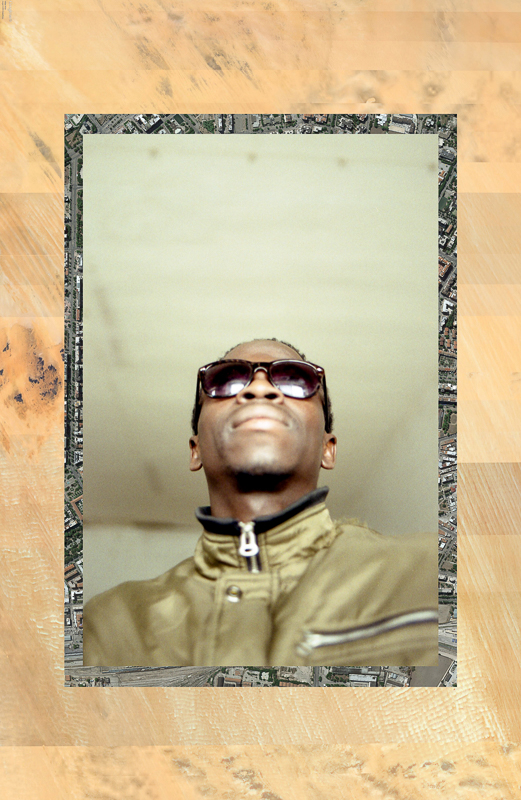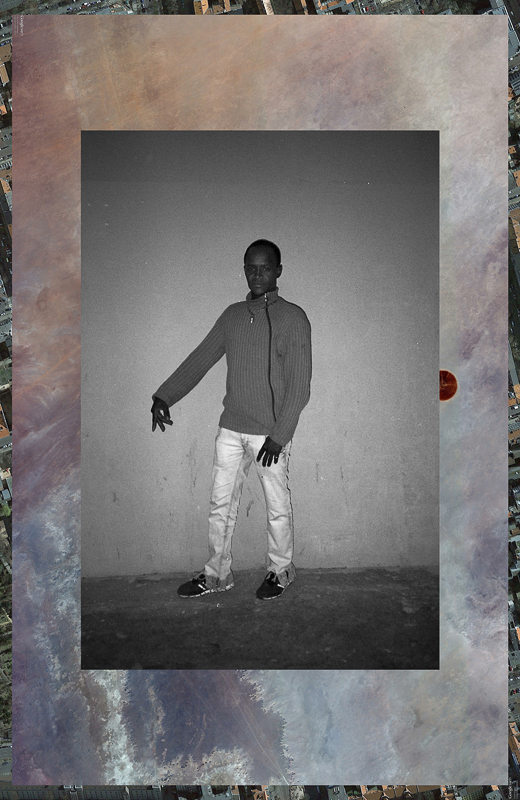BOUNDARY AS A FRAME - RUMORE PAIR
interview by Dimitri D’Ippolito
10.04.2017
Rumore Pair is a photographic duo based in Puglia by Maria Palmieri and Domenico d'Alessandro. Their work focuses on the limits of representation of the photographic medium and the processes of creation through the use of photography. In 2016 their work Boundary as a frame was shortlisted for the Prix Levallois.

DD: Another crucial theme is that of “borders” or “frontiers”. These are not only intended in the physical sense, but also through a philosophical interpretation. The “limit” is initially conceived in an abstract sense, and only eventually in a physical sense. This compels a reinterpretation of people’s movements, with the Mediterranean viewed as an obstacle rather than the bridge it has historically symbolized. This also involves the everyday life of a migrant in Italy as s/he attempts not to fall prey to exploitative mechanisms that actually occur in the reality you have documented, where migrants, for example, settle into an abandoned factories to escape 'caporalato' . What’s the relation between the theme of borders and the frames you use for your pictures?
RP: The frames are integrated to the pictures and symbolise the border as a controlling, limiting force, which categorizes and often excludes. Yet, maps in our projects enclose the personal, intimate stories of the photographed subjects. We were interested in personalizing a process which often loses contact with personal stories because it is over-analyzed and historicised.
DD: In particular, this project gives an alternative approach to conventional photography’s sensationalist tradition. Quite on the contrary, subjects are portrayed as happy and smiling – but most of all, they are portrayed with dignity. What kind of relationship has developed between you and your subjects?
RP: Since the beginning, we decided to build relationships with our subjects based on trust and reciprocal respect. Living in the same town and being peers allowed us to find many common grounds: the need for travelling, being away from home, work issues, the need to escape.
DD: Boundary as a frame was publicly exhibited in Lucera’s Piazza Duomo on some very big panels. How did the exhibition techniques contribute to enhancing the project?
RP: Although we acknowledge the culture of the digital image insofar as it is the creative source of this project, Boundary as a Frame’s digital spread has represented a big limit for us, as this work was conceived as a series of 3-D layers overlapping. Yet, we are grateful to the internet for allowing us to transcend territorial limits in its diffusion. The three-dimensionality initially took shape at the exhibition at the Galerie de l’Escale in Paris, among the works which were given the Prix Levallois 2016. In the case of the Lucera installation, however, the possibility of creating an 60ft-long, 10ft-high mural allowed for the images to be put in dialogue with a multiple audience and allowed the image’s political value to stand out.
DD: How did local communities and institutions react to your work and exhibition?
RP: What surprised us the most is the cold shoulder with which this work was met by Italian contests and festivals compared to the French ones. This is perhaps due to the work’s conceptual nature and to the delicate issue that is migration. It could also be because of its non-specifically photographic language, or maybe it was simply our own fault! In any case, our work has been presented on a number of occasions at festivals, in magazines, and during meetings with photography students.
DD: Do you intend to continue dealing with migration through this approach?
RP: Yes, the plan is to continue in spring, but this time we will leave the lowlands to get closer to the sea. We will go to Bari. This time, however, our research will address a different social group. Stay tuned!
Dimitri D'ippolito: Tell us about how Rumore Pair started, kicked off and about how you work as a pair.
Rumore Pair: Rumore Pair started as a duo a couple of years ago, when we decided we preferred working collectively rather than individually. We have currently decided to open a commercial studio which will also serve as our creative laboratory. How do we work as a duo? Good question. Finding a common thread in our individual ways of collaborating with one another has not been simple. In the case of our first work Creations an initial intuition was followed by a long research phase. Our idea was to give shape to a fiction of scientific methods through photography. In this work the use of a trusted means of reproducing reality allowed us to represent something that cannot, currently, be represented. We are very interested in photography’s ability to reveal itself and to allow the viewer to understand this trick. In the case of Boundary as a frame, the process went the opposite way since the work’s actual conceptual scope emerged whilst looking back upon the project. Present in the initial intuition, it slowly emerged until it eventually took shape in light of the result. This tension is what represents the duo’s two peculiarities: one being more instinctive and ‘fluid’, and the other being more analytical and conceptual.
DD: 'Boundary as a frame' is your second project. What is the purpose of the work and how did it begin?
RP: The purpose is to represent the ambivalence within the concept/symbol of ‘border’ understood not only in its political connotation, but also in the internal one inherent to the photographic medium. In our work a border becomes a new vital space within which a new space is generated. A biography – that is, a unique and one-time-only migration story – is imposed on the maps which are in turn arranged onto one-another; the overlaps intersect with the photographic medium’s limits, and with the simultaneous stratification which is now possible thanks to the internet. We wanted to portray the young Africans we met according to the same aesthetic criteria they produce themselves – what is defined as ‘vernacular photography’. Eventually, seeing print and digital publications pushed us towards the idea of working with photos that the African youth takes with their own smartphones and share on social media. However, we were surprised about the reiteration of the presence of fake frames or of frames generated by dedicated apps, which estranged the portrayed subject from its context by restricting the space around the picture, disallowing the viewer to guess the places the pictures were taken in and the places they visited at during their journey. After the shooting phase we conceived the idea of re-interpreting frames through something that would give the image more complexity, this way clarifying it.
DD: This project touches on many important contemporary themes. When we speak of migration in Italy we cannot avoid speaking of the Mediterranean. How does the Mediterranean tie into your experience as a couple of artists from Puglia?
RP: We consider ourselves strongly mediterranean. The mediterranean sea, as defined by Fernand Braudel, used to unite us rather than separate us before the ascent of monotheistic religions. We are interested in analyzing the duality between the natural propension towards freedom of movement that characterizes human beings in contrast with the eternal attempt to quantitatively control these migratory movements on behalf of states and international organizations. In Boundary as a Frame the expressive limits of the photographic medium and the contemporary obsession for documentation lead us to use maps to construct and inform these testimonies.




info@ardesiaprojects.com